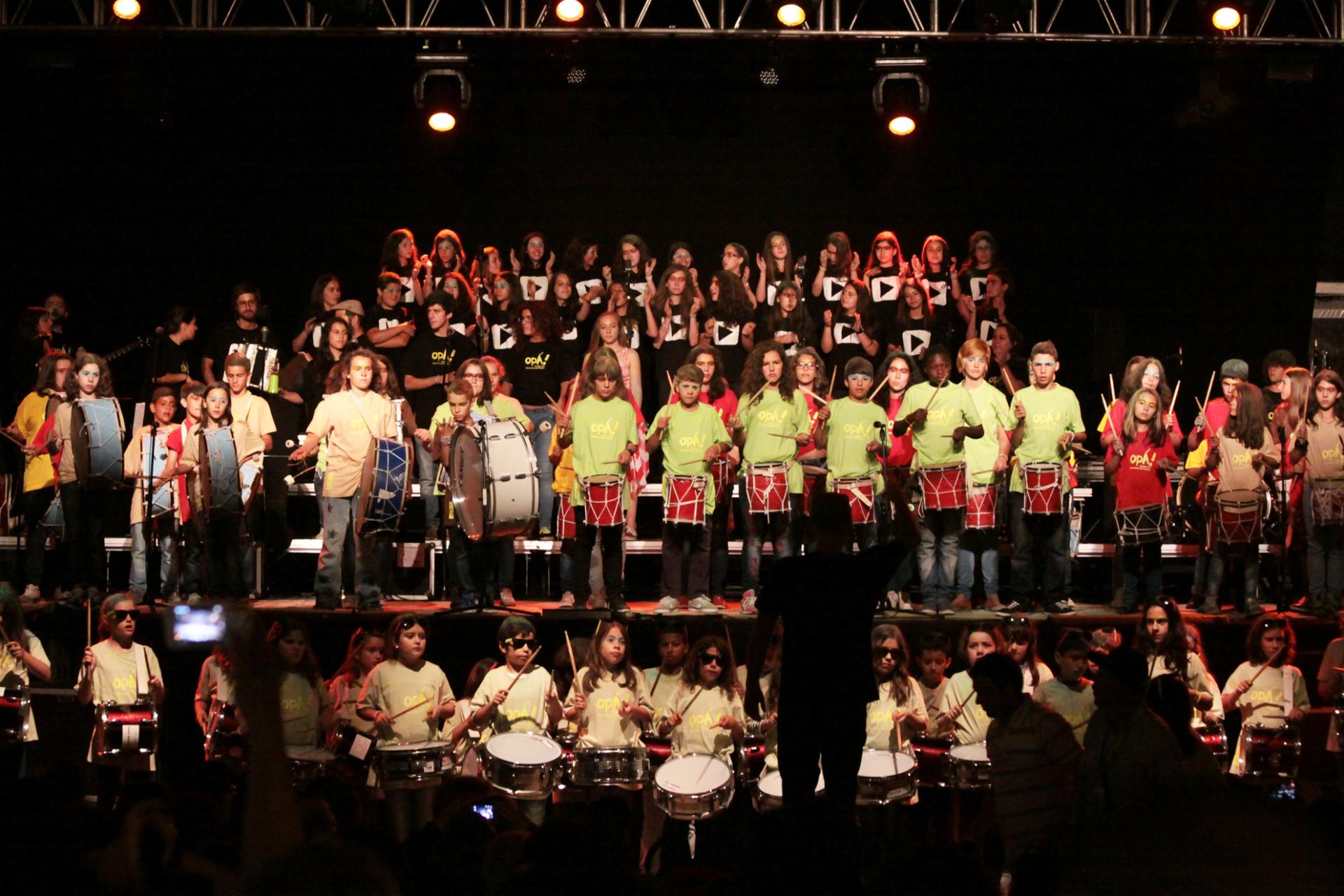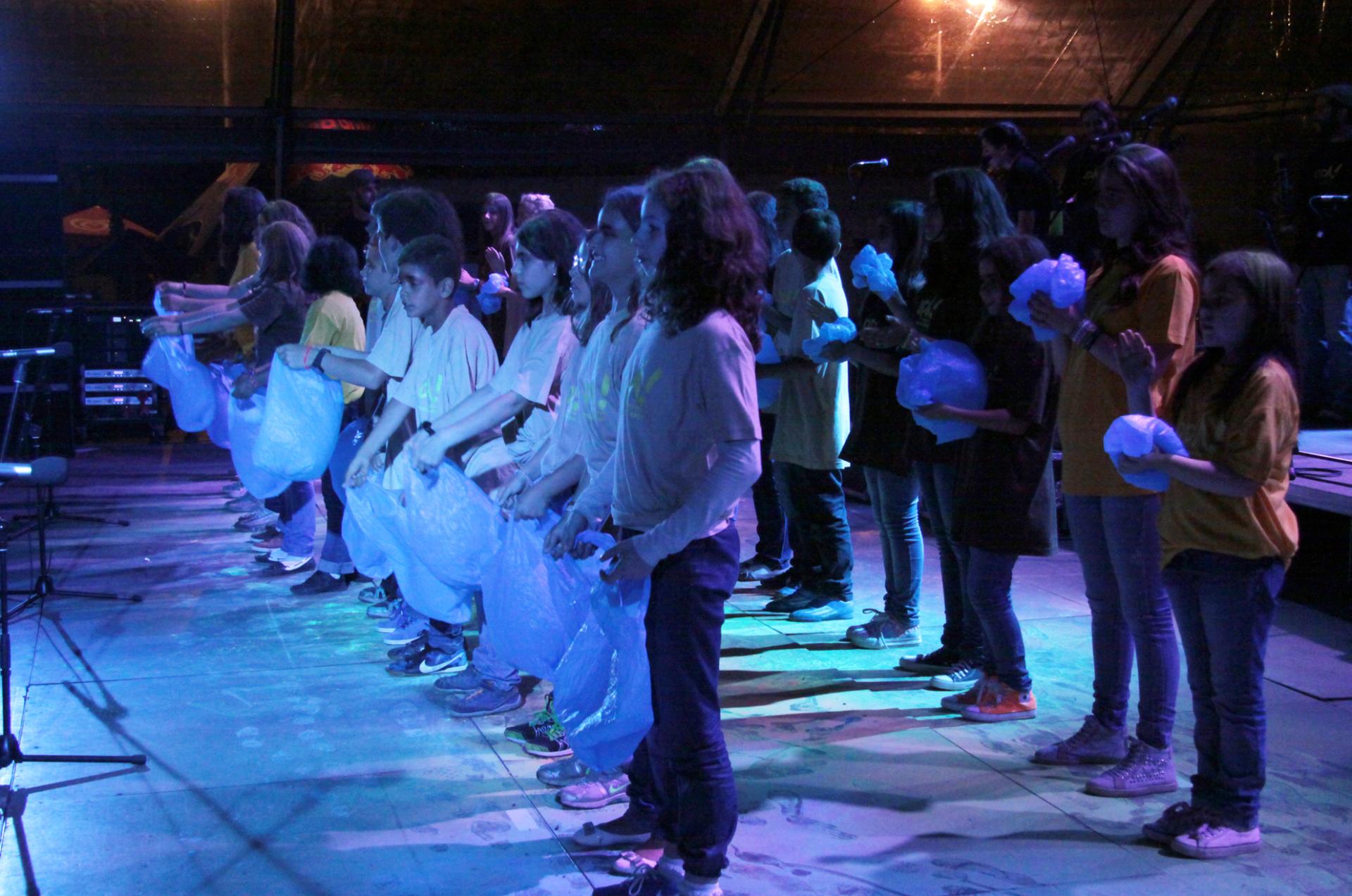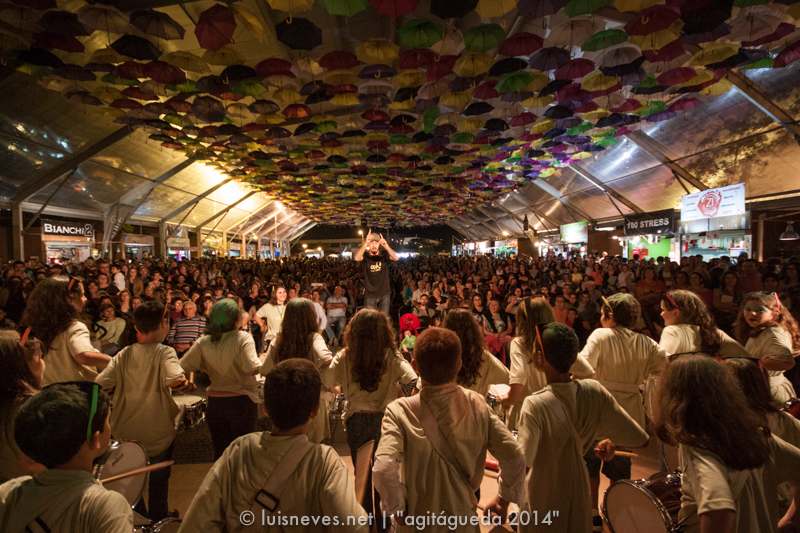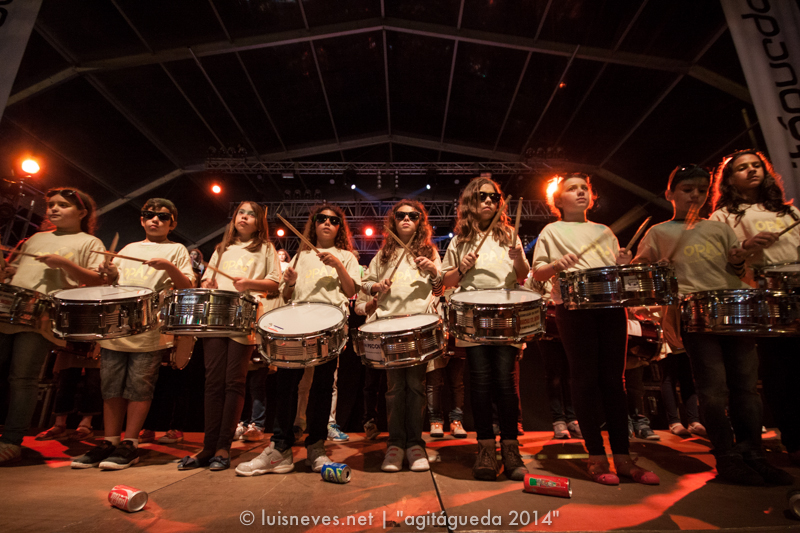opÁ!
Basic information
Project Title
Full project title
Category
Project Description
opÁ! created and dynamized an Orchestra of percussion instruments built from recycled or restored materials, reinforcing the ecological awareness of the community and the participants. It was a street performance project, adaptable to the stage, which included hundreds of children and young people, who were in a situation of social / economic vulnerability. The repertoire was based on the Cancioneiro Típico de Águeda, which identifies the local culture.
Project Region
EU Programme or fund
Description of the project
Summary
Born in Águeda, d'Orfeu's mission is to stimulate the local community with a persevering artistic and training program, with the central objective of qualifying and retaining new (un)trained audiences. In this sense, the bet on artistic projects of social intervention was reinforced, as was the case of opÁ! – orquestra percussiva de Águeda. The objective was to create an orchestra that brought together various agents from the local community, allowing better and greater communication between them. These agents are Particular Institutions of Social Solidarity, social and humanitarian associations and schools. Since the target audience for this project was children and young people who, by participating in the project, had the opportunity to create solid bonds with the structure itself and the others involved, thus allowing to break prejudices, to have a development balance of your individuality in the group and reinforce creative and critical thinking. Through this project, it was fought against social exclusion in cultural and educational offerings, gender inequality and awareness for the preservation of the environment. This idea arises from the analysis made over the years of the lack of community artistic activity that, globally, could change the way young people get involved in this mission. The percussive orchestra is composed of several suits of instruments constructed from recycled or restored materials in addition to the instrument common to all participants: your own body. The first has to do with the reinforcement of ecological awareness and the second with the need to reinforce self-confidence in situations of exposure in the group. Strengthening the idea that all elements are equally important in a chain, regardless of the degree of skills and financial conditions. This project ran from 2013 to 2019, with hundreds of training sessions, presented one show/year, mini-presentations, involving hundreds of young participants and several partners.
Key objectives for sustainability
In opÁ! – orquestra percussiva de Águeda, awareness of ecological and environmental education was strengthened and became a central axis for the development of the activity, since the construction of percussion instruments was made from recycled and restored materials, such as: cans, drums, lids, plastic spoons, bottles, plastic bags, cards, bottle tops, canes, among many others. These instruments were built and adapted, throughout all the sessions, by the young people participating in the opÁ! Project, with the support of the facilitating trainers, from different artistic areas. When taking the stage, the public could become aware of the urgency of the action of environmental intervention, through the representation that these young people demonstrated with their artistic performance, which included musician-theatrical moments, in a scenario also created by them and with different recycled and restored materials. As a result of these constructions, instruments were born not only for percussion, but also for wind and strings, in a true eco-friendly orchestra, motivating an artistic practice in search of encouragement for affection and respect for nature, providing dialogues and encouraging long-term structural changes.
Key objectives for aesthetics and quality
The costumes were designed specifically for the Orchestra, the festive choreographies were made to enchant audiences, joining some large-scale artistic characteristics that complete an identity image of the project. In order for this to work, the following plan to be applied in the training sessions was outlined: predominance of musical and percussive expression; mastery of several theatrical expressions; creation and characterization of characters; drawing of the show script; dance; choreographic conception of the themes to be presented in the show; and, of course, instrument construction.
At the start of the project, participation agreements were signed between d'Orfeu AC and the various partners that formalized the cooperation between the entities, defining the day and time of the weekly musical training sessions, in addition to the commitment to perform in public at the end each school year.
The entire team of the association came together in the preparation phase of the final shows, combining the complementary technical and production skills that are already relevant to the quality of the associative and artistic work. The companions / animators / teachers of the project of each of the partner institutions have always been training their youngsters and their structures, getting involved in it with all their non-formal skills.
Key objectives for inclusion
This project aims to fill the absence of artistic training, which is essential in the training of all people, paying special attention to the integration of young people from different contexts and social classes, who are disadvantaged or with low involvement in cultural activities. The project is particularly aimed at young citizens who, in the future, will be responsible for the preservation of intangible heritage. The project started in September 2013, offering, since then, musical training in the percussion area to more than 400 children and young people between 8 and 18 years old, from different social contexts, in partnership with several social and educational institutions in the municipality of Águeda.
By providing new opportunities and experiences, it is intended to stimulate the cultural education of the young community, contributing to the dynamism, diversity and development of the region.
This project is an inclusive project insofar as it can reach all types of public, with a focus on working with institutions in the municipality, of a social nature. The work developed in these social institutions allowed to contribute to the personal development of children and young people who are in a situation of vulnerability, through the identification and potentialization of talents, the construction of artistic capacities, the expansion of cultural diversity and the guarantee of essential rights.
The project opÁ! was integrated in MIES - Map of Innovation and Social Entrepreneurship, which aims to map and distinguish initiatives with high potential for social entrepreneurship. In 2016, opÁ! received Honorable Mentions from the Access Culture Award, in the "Social Accessibility" category, and from the "Good Practices Youth Associations" Award (IPDJ).
Results in relation to category
For each activities, there were essentially three types / moments of evaluation:
• formative evaluation, which took place during the implementation process with a view to introducing changes that led to the improvement of the process;
• summative assessment, which was conducted after the end of any activity, to evaluate the results in relation to certain criteria of effectiveness depending on the activity (for example: number of participants / spectators, recipes, audience satisfaction, etc.);
• impact assessment, which involved comparing the final results with the initial results (in the case of festivals, for example, it implies a comparison with data from previous editions, evaluating the relationship between the application of resources - human, material and financial - and the benefits achieved). This project had more than 30 presentations, from 2013 to 2019, annually involving more than 100 participants, having collected and transformed kilograms of materials that were recycled and restored.
How Citizens benefit
This collective of young people and children from the municipality, without losing its social intervention nature, performed regularly in public, with more or less extensive training, depending on the circumstances or the availability of partner institutions. In addition to the continuous training during the academic years - developed by d'Orfeu AC in each institution - and these presentations, the entire process resulted in a great interassociative show every year, in July of each year, which was recorded on video and photography, and shared with all participants and the general public. Each show had about 1000 people in attendance. During the material collection phase, the participants involved the entire community and local companies, sharing the awareness of the importance of environmental preservation with all the audiences contacted. With opÁ!, hundreds of children, who until now had no musical training or access to it, acquired knowledge in various artistic areas and had the opportunity to take the stage with their own show.
Innovative character
The opÁ - orquestra percussiva de Águeda, was an artistic project of social intervention by d'Orfeu AC in partnership with several institutions in the municipality and with the Municipality of Águeda, Aveiro district (Portugal), which involved nearly 400 children and young people around a percussion orchestra project, in which its particularity was to have the instruments built by the participants themselves, who came from different social contexts.
The opÁ! distinguished by its innovative character, seeking to be more than a percussion orchestra. Human value is intrinsic to the project, which assumed a social dimension with the mission of involving young people in the community and raising awareness of associations, music, culture and environmental sustainability, also combating school dropout. Environmental awareness was a differentiating point, with the instruments to be recovered or built exclusively from recycled materials. New opportunities and experiences were provided, the intention was to stimulate the cultural education of the young community, contributing to the dynamism, diversity and development of the region. With special attention to the integration of young socially disadvantaged contexts or with low involvement in cultural activities.
This project was innovative because it brought music and regional identity, with its own repertoire, to children and adolescents living in communities of socially vulnerable situation and managed to stimulate musical training and creativity.




